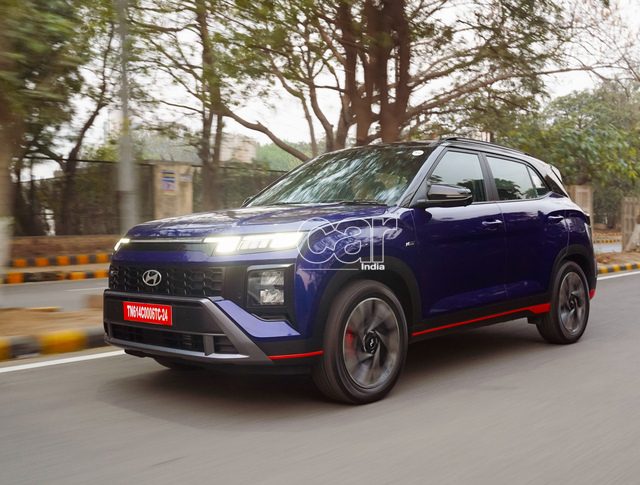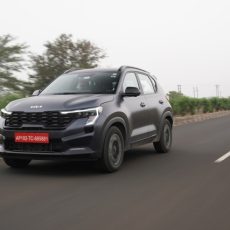
We experience the two new variants of the Force One SUV

Sport utility vehicle (SUV) is a misleading term considering the type of vehicles it is associated with. Today’s SUVs have evolved from being crude and rugged off-roading vehicles into comfortable mile-munchers that spend most of their time on paved roads and are equipped with all the features seen in a regular sedan.

However, the 4×4 tag is still considered prestigious. It adds a feel of authenticity to these vehicles and has an appeal for its buyers. The Force One finally gets this tag with the introduction of the new LX variant of the SUV.

Force Motors entered the passenger car business in August 2011. The 4×2 variant of the Force One SUV launched at that time has now been named ‘SX’ while the ‘LX’ will be the top variant of the SUV when it is officially launched this month.
With a length of 4,860 metres, the Force One is the longest SUV in its class. It is also quite tall and wide, but looks proportionate. It is a gentle giant with good road presence, aided by the LED daytime running lights.

The 4×4 graphics, a larger front bash plate and the different badging on the LX variant set it apart in looks from the SX. It has a three-mm lower ground clearance and comes with ABS and EBD, but these safety features have now been added to the SX as well.
The Force One cabin is spacious and has three rows of seats with very good legroom for each. Boot space is compromised due to the third row of seats, but it can be expanded by folding them up. The beige coloured leather upholstery of the LX and SX feels upmarket, though the quality of plastic of the interior panels and their fit-and-finish need improvement. The car has air-conditioner vents for all three rows, a couple of 12V power sockets, Bluetooth connectivity, steering-mounted controls for the music system and progressive cruise control and reverse parking sensors.

The Force One has a ladder type chassis, which has robotic welding and a corrosion resistant Cathodic Electro-Deposition (CED) coating. The LX variant has the same Daimler AG-sourced 2.2-litre (FMTech), turbocharged common rail diesel engine that powers the SX. It is mated to a five-speed manual gearbox and the entire drivetrain is assembled at Force Motors’ Pithampur plant along with the rest of the car.
The engine has a maximum power output of 141 PS at 3,800 RPM and the peak torque of 321 Nm is available from 1,600 to 2,400 RPM. The Force One isn’t a very fast SUV, but has a good mid-range due to the wide spread of torque and pulls strongly from 1,600 RPM all the way to the 4,200 RPM red-line. However, we are not very pleased with the quality of gear-shifts. The top speed of this SUV could not be tested during our short drive around the small test track inside Force Motors’ plant in Pune, but we had attained a true top speed of 162 km/h in the SX variant when we tested it back in 2011 while the average fuel efficiency is 9.12 km/l.

The Force One is a capable off-roader as we found out at the small off-road section of the test-track. The wider 245/70 R16 all-terrain Apollo Hawkz tubeless tyres and the 202-mm ground clearance allow it to be driven over a rocky course and the all-wheel-drive system enhances its capabilities further. The all-wheel-drive system has a Divgi-Warner (Indian joint venture of Borg-Warner) electric-shift transfer case, which allows the driver to switch to 4×4 by turning a knob near the gear-shift lever while driving. According to Force Motors, the SUV can climb a 20-degree gradient in the 4×4 high mode and can scale an incline at an angle of about 45 degrees in 4×4 low.
Braking is decent and the ABS and EBD systems on the LX and SX variants help keep the SUV stable under hard braking. The ‘ABS off’ button on the dashboard de-activates the system, but it works only at speeds below 40 km/h.
According to Force Motors, the cost of installing a 4×4 system is about Rs 1.5 lakh. Adding that to the price of the SX variant, the expected price of the LX is about Rs 15.5 lakh (OTR, Pune).
Force Motors also launched a base variant of the Force One, called EX, recently and we drove it during the same visit. The EX is an impoverished version of the SUV in terms of features and has a different engine as well.
The 2.6-litre turbocharged diesel mill powering the EX is mated to a five-speed manual gearbox. It has a maximum power output of 82 PS at 3,200 RPM and a peak torque of 230 Nm between 1,800 and 2,000 RPM. The EX feels noticeably slower than the LX and the gearshifts need improvement. The engine is also comparatively noisier and its vibrations are transmitted inside the cabin.
Where it scores is the price, which is the lowest among the three variants. At Rs 10.3 lakh, the Force One EX is more than Rs 4 lakh cheaper than the SX six-seater, but the 2.6-litre engine is BS III compliant, so it is not available in Tier I cities.
However, the addition of two new variants of the Force One have given the company a wider reach overall and will help improve sales.
Story: Piyush Sonsale
Photography: Rommel Albuquerque




